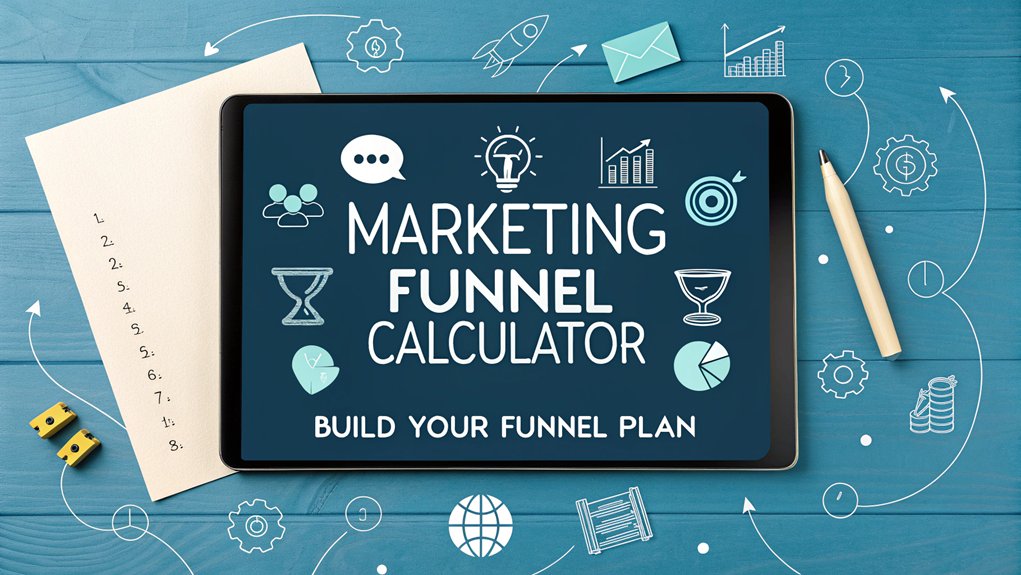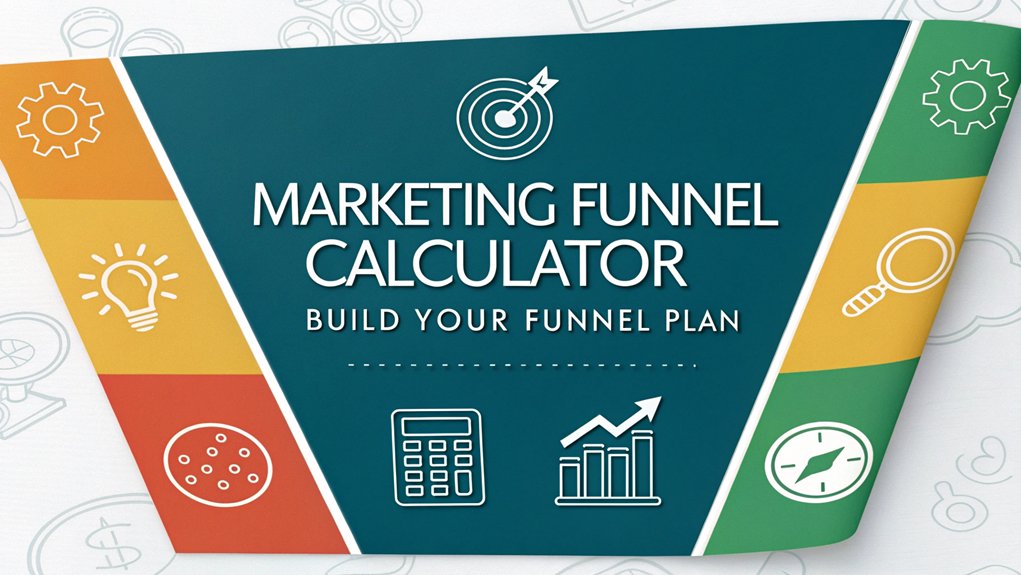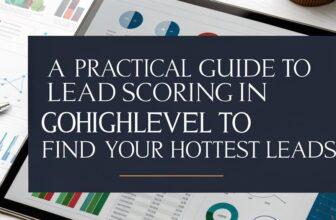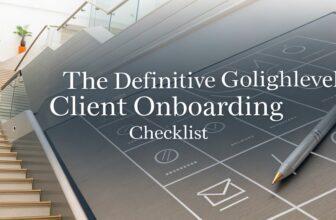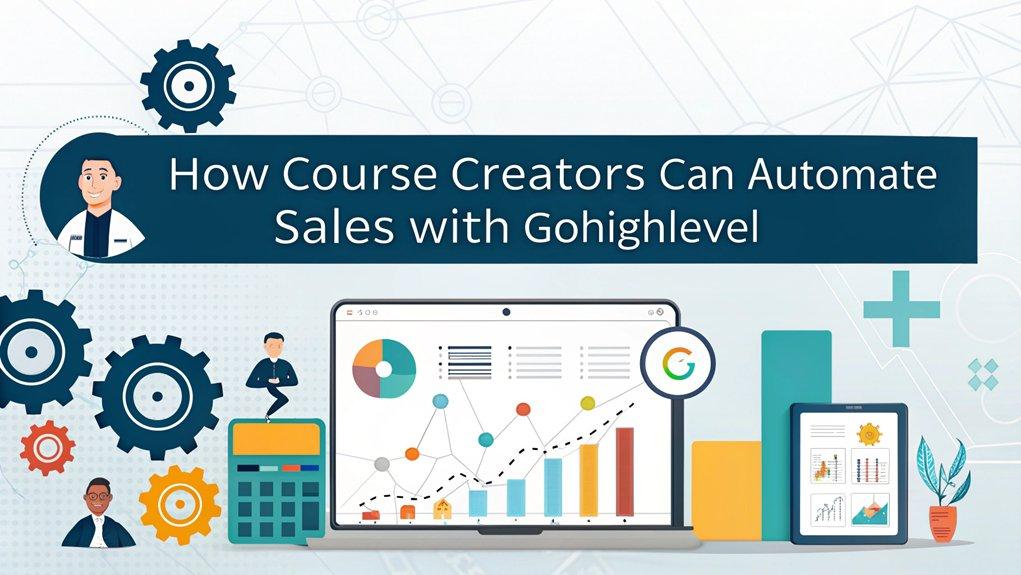Use a marketing funnel calculator to strategically plan and optimize your marketing journey. Understand the funnel stages—Awareness, Evaluation, Conversion—by analyzing key metrics like Return on Ad Spend (ROAS) and conversion rates. Employ automation tools for efficient metric tracking and focus on engagement types to elevate audience connections. Leverage insights from tailored funnel plans with flexible granularity, ensuring precise data integration and resource allocation. Explore further to maximize your marketing potential and achieve impactful results.
Key Facts Summarized
- A marketing funnel calculator aids in visualizing and planning each stage of the customer journey effectively.
- Utilize automation tools like Planful for Marketing to streamline data tracking and strategic planning.
- Flexpoints and connectors allow for scalable integration and extensive data management across marketing platforms.
- Tailored funnel plans offer different levels of connectivity and branding options to match business needs.
- Regular KPI analysis helps optimize funnel stages, enhancing customer conversion and engagement rates.
Understanding the Marketing Funnel
When you delve into the concept of the marketing funnel, you’ll find it’s a crucial framework for organizing and understanding the customer journey. The marketing funnel enables you to map each stage of engagement, from initial awareness to post-purchase loyalty.
By tracking and optimizing your efforts at each stage, you gain insights into how customers interact with your brand. Key metrics vary across the funnel, focusing on brand introduction, product trustworthiness, and demonstrating value. Effective keyword research can help you identify the most impactful stages to target for your marketing efforts.
Tools like Planful for Marketing automate these measurements, letting you concentrate on strategic decision-making rather than manual calculations. By analyzing metrics like conversion rates, you can pinpoint strengths and weaknesses in your strategy, ultimately guiding improvements and optimizing customer acquisition efforts effectively.
The Three Stages of a Marketing Funnel
In the marketing funnel, understanding the transition from awareness to loyalty is crucial for optimizing lead conversion.
At the Top of the Funnel (ToFU), your focus should be on capturing attention through data-backed content strategies.
Meanwhile, the Middle of the Funnel (MoFU) requires engaging those leads with targeted content that aids their evaluation process.
Finally, at the Bottom of the Funnel (BoFU), you need to drive conversions by showcasing your brand’s value and encouraging definitive actions.
To enhance your strategy, consider conducting market research to gain valuable insights into your audience’s preferences and behaviors.
Leverage insights to measure and enhance these stages effectively.
Awareness to Loyalty
Although the journey from awareness to loyalty in a marketing funnel might seem linear, each stage requires distinct strategies to guide prospects effectively. To move customers seamlessly from awareness to loyalty, you need to understand and leverage each funnel phase.
At the top, generate awareness with engaging content like paid ads. In the middle, focus on evaluation; provide valuable, gated content that builds trust. At the bottom, convert leads through compelling brand demonstrations.
To ensure a successful funnel:
- Track metrics: Identify gaps and optimize strategies for conversions.
- Align with AIDA: Guide prospects from Awareness to Action.
- Use data-driven insights: Analyze each stage for effectiveness.
- Adapt strategies: Tailor content based on customer needs.
These steps ensure a robust journey toward customer loyalty.
ToFU, MoFU, BoFU
Despite the complexities of modern marketing, understanding the ToFU, MoFU, and BoFU stages of a marketing funnel is crucial for optimizing conversions.
At the Top of the Funnel (ToFU), your goal is to raise awareness using content like paid ads and educational resources. This stage sets the foundation for improving conversion rates by attracting potential leads.
In the Middle of the Funnel (MoFU), leads evaluate solutions, engaging with gated content and how-to guides. This phase is vital for building trust and nurturing relationships.
Finally, the Bottom of the Funnel (BoFU) is where conversion happens. Here, live demos and customer stories provide the social proof needed to convert leads into customers.
Tracking these stages helps identify gaps and optimize conversion rates effectively.
Key Performance Indicators (KPIs)
When you’re assessing your marketing funnel’s effectiveness, focusing on KPIs like Return on Ad Spend (ROAS) and conversion rates is essential. ROAS provides a clear picture of how well your ad investments are paying off, while conversion rates highlight how many leads turn into actual customers. Additionally, tracking analytics to assess website performance can provide deeper insights into your funnel’s performance and help optimize your strategies.
Tracking Ad Spend Efficiency
Understanding and tracking ad spend efficiency through Key Performance Indicators (KPIs) is crucial for optimizing marketing strategies. By focusing on metrics like Return on Ad Spend (ROAS) and conversion rates, you can gain valuable insights into your campaign’s financial effectiveness.
Calculating ROAS with the formula Revenue generated from ads / Cost of ads helps determine if your budget is driving significant revenue. Monitoring conversion rates, expressed as (Conversions / Total visitors) x 100, assesses how well your ads convert leads into customers.
- A high ROAS indicates strong financial returns.
- Conversion rates above 25% signal an efficient funnel.
- Regular analysis helps identify strengths and weaknesses.
- Data-driven decisions enhance ad spend efficiency.
These KPIs are essential for refining your marketing strategy and maximizing returns.
Measuring Conversion Success
Building on the foundation of tracking ad spend efficiency, measuring conversion success through Key Performance Indicators (KPIs) offers a deeper insight into your marketing funnel’s effectiveness.
To calculate the conversion rate, divide the number of conversions by the total number of visitors, then multiply by 100. This percentage reveals how well leads are being converted across funnel stages like ToFU, MoFU, and BoFU. A conversion rate above 25% signifies effective audience engagement, while rates below 5% highlight areas needing improvement.
By consistently monitoring these metrics, you can pinpoint gaps and optimize strategies.
Utilize automated tools like Planful for Marketing to efficiently track KPIs, allowing you to focus on enhancing strategies and driving better results.
Optimizing Funnel Performance
To truly optimize funnel performance, you must dive deep into Key Performance Indicators (KPIs) that reflect each stage’s efficiency. Metrics like Return on Ad Spend (ROAS) and Conversion Rate are vital for assessing your marketing efforts.
A Conversion Rate over 25% signals effective alignment of strategies with customer engagement, while a rate of 5%-15% indicates room for improvement, perhaps in lead quality or funnel processes.
Automation tools like Planful can streamline KPI measurement, freeing you to focus on strategy rather than manual calculations.
- Track each stage: Identifies inefficiencies in your funnel.
- Use automation: Saves time and enhances focus on strategic decisions.
- Analyze regularly: Enables data-driven improvements.
- Aim for high ROAS: Ensures efficient ad spend and maximizes returns.
Automation and Importance of Marketing Funnel Metrics
When you automate marketing funnel metrics with tools like Planful, you free up valuable time from manual calculations, allowing you to concentrate on strategic initiatives and optimize campaigns effectively.
Tracking these metrics is crucial for uncovering gaps in the customer journey, empowering you to make data-driven decisions that elevate marketing performance and foster growth.
By continuously monitoring funnel metrics, you evaluate the success of your efforts, identifying strengths and weaknesses that guide informed strategy adjustments. Understanding user behavior allows you to tailor your marketing tactics to better meet customer needs.
Automation also enhances budgeting and resource allocation, offering clear insights into return on ad spend (ROAS) and conversion rates.
Regular reviews of automated metrics ensure continuous improvement, leading to better lead quality and increased conversion rates, ultimately refining your targeted campaigns.
Engagement Types and Target Audience
Automating marketing funnel metrics sets the stage for exploring how different engagement types impact your target audience.
As a service-oriented business, particularly in coaching or training, leveraging the Marketing Funnel Calculator lets you experiment with engagement types like in-person interactions and social media impressions. This tool’s data-driven approach helps you identify which methods offer the highest returns, optimizing your lead generation strategies.
By inputting various engagement metrics, you can make informed strategic decisions to enhance customer acquisition.
Consider these engagement types to reach your audience effectively:
- In-person interactions: Build personal connections and trust.
- Social media impressions: Expand your reach and visibility.
- Tailored outreach strategies: Customize for specific audience needs.
- Engagement metrics analysis: Evaluate and refine your approach.
Understanding audience needs ensures your marketing efforts are both efficient and impactful.
Funnel Plans Overview
While navigating the complexity of marketing strategies, understanding the Funnel Plans Overview is crucial for optimizing your approach.
The Free plan provides an entry point with 4 connectors, perfect for familiarizing yourself with its capabilities. As your marketing channels expand, the Starter plan offers over 500 connectors, catering to businesses seeking broader integration options.
For organizations operating at scale, enterprise-ready features in higher-tier plans address the demands of larger teams and complex needs. Pricing varies based on specific use cases, making it essential to book a demo for tailored quotes.
Additionally, unlimited custom branding options for dashboards across all plans ensure consistency in your brand identity. This strategic alignment enhances your marketing funnel’s effectiveness and integration.
Flexpoints and Capacity
Understanding flexpoints and their capacity is critical for leveraging the full potential of your marketing funnel platform. Flexpoints define your subscription’s connection capacity, dictating how many data integrations you can utilize. Each plan begins with a set number of flexpoints that facilitate seamless data collection and reporting by linking your marketing and sales platforms.
Here’s what you need to know about flexpoints:
- Purchase Options: Buy additional flexpoints through the sales team or directly via the platform to scale with your needs.
- Cost Efficiency: No charges for data volumes or processed rows help manage your data without extra costs.
- Plan Variability: Advanced plans offer higher flexpoint capacity, catering to larger organizations and agencies.
- Scalability: Flexpoints allow for growth and adaptability as your data integration requirements expand.
- Additionally, understanding your target audience is essential to ensure that your marketing strategies are effectively aligned with your business goals.
Connectors, Accounts, and Destinations
When you’re looking to optimize your marketing efforts, connectors in the marketing funnel calculator are crucial for seamlessly collecting and analyzing data from multiple sources. Connectors act as bridges to various marketing and sales platforms, ensuring all data is channeled efficiently. These connectors are tied to specific accounts like ad or social media pages, enabling precise data collection. You can link multiple accounts to a single connector, enriching your insights. Data is then sent to destinations such as BI tools or data warehouses, facilitating comprehensive analysis. With unlimited connections, you’re free to handle extensive data volumes without restrictions.
| Connector Type | Associated Accounts | Data Destinations |
|---|---|---|
| Social Media | Facebook, Twitter | Dashboarding Tools |
| Advertising | Google Ads, LinkedIn | BI Tools |
| CRM | Salesforce, HubSpot | Data Warehouses |
| Mailchimp, Constant Contact | Analytics Platforms |
Frequently Asked Questions
How Do You Calculate Marketing Funnel?
To calculate a marketing funnel, you start by identifying each stage: awareness, consideration, and conversion.
Track the number of leads at each stage. Use the formula: (Stage Conversions / Initial Leads) x 100 to find conversion rates.
Analyze where leads drop off to refine strategies. By regularly reviewing these metrics, you’ll optimize resources and improve performance.
This approach ensures your marketing efforts are data-driven and effectively targeted for better results.
Is There a Free Funnel Builder?
Ever felt like Odysseus navigating a sea of marketing challenges? Yes, there’s a free funnel builder ready to be your guiding star.
It lets you craft and test marketing funnels with up to four connectors, no strings attached. You’ll analyze engagement metrics and assess lead generation methods, tailoring insights to your service-oriented business.
While the advanced plan offers more, the free version is a perfect launchpad for understanding funnel dynamics.
What Are the 5 Stages of the Marketing Funnel?
You’ll encounter five stages in the marketing funnel: Awareness, Interest, Consideration, Intent, and Purchase.
First, you capture attention through ads or social media. Next, you spark interest with engaging content.
Then, your potential customers evaluate options, weighing benefits during Consideration. Intent signals readiness to buy, often shown by adding items to a cart.
Finally, in the Purchase stage, they complete the transaction, turning leads into customers.
Can I Use AI to Create a Sales Funnel?
You can definitely use AI to create a sales funnel.
By leveraging AI, you streamline the process by analyzing customer data to uncover behaviors and preferences. This allows you to segment leads more effectively and prioritize outreach.
Machine learning predicts conversions, optimizing your ad spend. Real-time AI analytics refine strategies and improve conversion rates.
Plus, AI enhances personalization, ensuring your content resonates with each prospect based on their brand interactions.
Conclusion
As you craft your marketing funnel plan, remember that businesses with well-defined funnels can increase their conversion rates by up to 20%. By focusing on key metrics and automating processes, you’ll efficiently guide your audience through each stage. Engage with your target audience using tailored strategies, and ensure your flexpoints and connectors are optimized for seamless transitions. A data-driven approach not only boosts engagement but also helps you maximize your marketing capacity and reach your business goals effectively.

